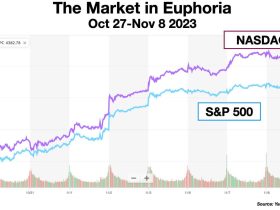As China’s economy has struggled to gain traction this year, many investors accept the country’s growth rate will be below the government’s official target of 5%. This is reflected in a significant underperformance of China’s stock market relative to the U.S. and other global peers in the past four months. In August, foreign investors sold Chinese shares at a record pace according to The Financial Times.
There is currently a diversity of views about China’s economy. Until recently, most forecasters anticipated China could sustain 5% growth throughout this decade. However, the International Monetary Fund now puts China’s gross domestic product growth at below 4% in coming years. The Lowy Institute, an Australia-based think tank that conducts research on the Asia-Pacific region, offers a more pessimistic prognosis: It projects that growth will slow to 3% by 2030 and average 2% to 3% per annum over the next two decades.
This begs the question of how China can attain its stated 5% goal. There is widespread awareness that the country’s population is peaking and is about to decline as a result of the former one-child policy. The main engine of growth has been the country’s high rate of capital formation, which is supported by a high saving rate. However, returns on capital have fallen owing to diminishing returns, and overall economic efficiency as measured by growth of total factor productivity has been cut roughly in half in the past decade. Therefore, economic efficiency would have to improve significantly to achieve the stated target.
Many economists question how this will be possible. China’s economic policy under President Xi Jinping has favored inefficient state-owned enterprises over the private sector, which is the main source of the country’s innovation and dynamism. There has also been an excess of public infrastructure in many areas, and the property sector is now under severe strain following decades of overbuilding that will take years to unwind. Meanwhile, the government is constrained from boosting spending by China’s high debt ratio that is approaching 300% of GDP, Nikkei reported.
Mickey Levy of Berenberg Capital Markets contends in a Wall Street Journal op-ed that it would be prudent for China’s leaders to acknowledge these challenges and to set a more realistic growth target of 2% to 3% in the intermediate term. “Trying to achieve a higher target would require significant fiscal stimulus and government investment in unproductive activities that would primarily serve to lower future potential growth,” he wrote.
If so, investors will need to consider the ramifications if China’s trend growth rate is cut roughly in half. The potential impact on the global economy should not be dismissed, considering China and the U.S. have been the primary engines of global growth since China became a member of the World Trade Organization in December 2001. JPMorgan estimates China’s contribution to global growth doubled from 15% in the first decade of this century to more than 30% in the second decade.
Below are key areas likely to be impacted by a sustained Chinese slowdown:
First, the most adversely affected places are emerging economies that produce commodities and raw materials because China is a major importer of these items. This already is apparent in emerging market equities, which in August experienced their worst monthly returns since 2015, Bloomberg reported. As China reduces its reliance on the property sector, which absorbs tons of iron ore from Brazil and Australia, it is also likely to play a less prominent role in the global industrial cycle.
Second, the region facing the most direct impact is the Asia-Pacific as it is the most closely integrated with China. Therefore, it could experience a growth slowdown. However, several offsets will help support some countries over the longer term. One is multinational corporations have been diversifying their supply chains away from China as a result of the Covid-19 pandemic and heightened U.S.-China tensions. Among the main beneficiaries are India, Japan and Vietnam, which have been able to attract sizable foreign direct investment flows.
Third, trade flows between the U.S. and China, which have already been impacted by the countries’ frictions, could diminish further. This could have an impact on U.S. economic growth. However, should China’s crisis spread, a recent column by The New York Times’ Paul Krugman observed that America has “remarkably little financial or trade exposure to China’s problems.” Another potential offset is deflationary pressures in China could help alleviate inflation in the U.S. and other industrial countries, and thereby help to lower interest rates.
One issue some observers have raised is whether China will suffer a lost decade, similar to Japan’s experience after its real estate and stock market bubbles burst.
My take is while there are some parallels between the two countries, there are also several key differences. One is the magnitude of the decline in property values in China is likely to be less severe than in Japan, which experienced a cumulative decline of about 70%. The policy response is also very different, with China continuing to prop up the market whereas the Bank of Japan tightened monetary policy with the intent of bursting the bubble. Furthermore, China’s banking system is primarily state-owned, which means it is less at risk than Japan’s was at the time.
Weighing these considerations, the most likely outcome is China’s economic slowdown will be less abrupt than Japan’s. But it will also take a long time for excesses that have been created to be worked out.
Meanwhile, a policy brief by Bruegel — a Belgian think tank — notes Chinese corporations’ average return on assets has fallen steadily both for privately-owned and state-owned enterprises since the mid-2010s. Consequently, even though China’s stock market may appear cheap with a low P/E ratio, it could continue to lag global peers for some time because investors have not priced in a sustained economic slowdown. In these circumstances, global investors may routinely underweight Chinese stocks relative to their benchmarks just as they did for Japanese stocks during the period when its bubble burst.
Read the full article here













Leave a Reply